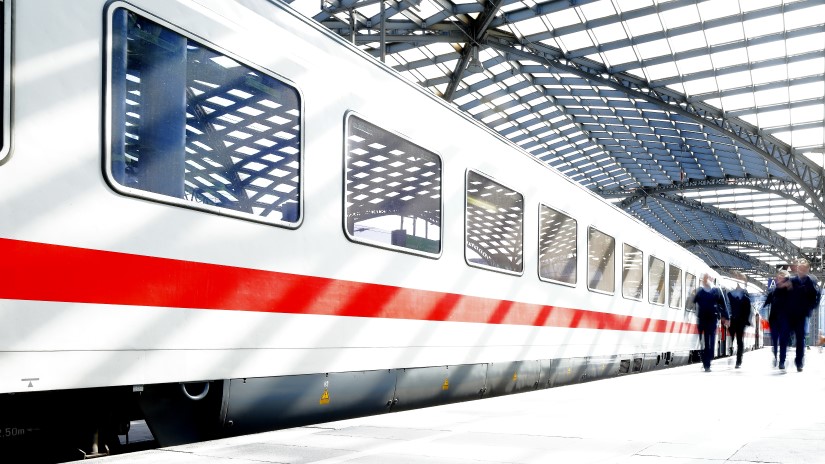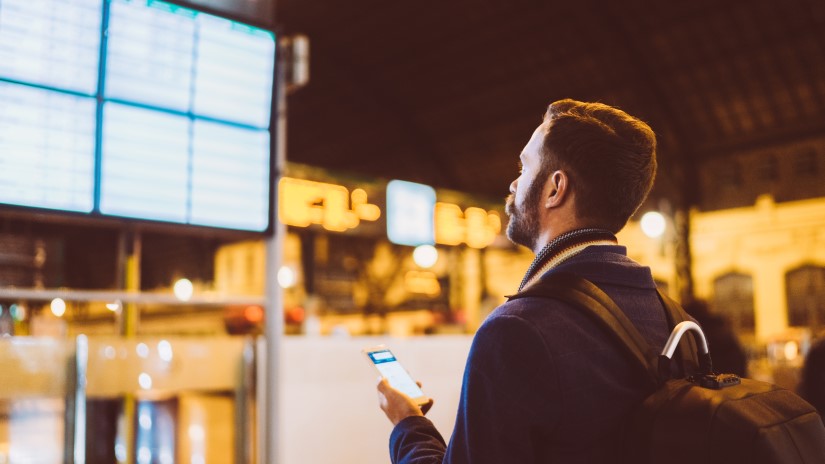By Ravigopal Vennelakanti, Chief Innovation Strategist and VP Big Data Analytics Solutions Lab, Hitachi America, Ltd.
Before the pandemic, public transportation was making significant progress in leveraging technology to become more accessible, affordable and environmentally sustainable. Now most organizations have their employees working from home, and the use of trains, buses and other transit systems has plunged. In the spring of 2020, most transportation authorities reported a double-digit reduction in general ridership, some as much as 90%.i Even as restrictions eased, ridership remained at much lower levels than usual. For example, in late August 2020, the New York City subway system reported an average of 1.36 million riders per weekday—a 75% drop compared to last year.ii

Mass transit plays a key role in supporting essential workers and essential travel, and most transit agencies have remained operational throughout the crisis. Like almost every business, they have adopted safety measures such as regular sanitizing routines, face masks, and social distancing. In addition, they are accelerating their adoption and use of technologies such as video analytics, predictive/preventive maintenance, sensors, and edge analytics — to augment these efforts. In many ways, the pandemic has been a catalyst for digital transformation in the industry. These transformation initiatives are also opening up new opportunities to make public transportation more efficient, cost effective and customer-centric.
One of the most compelling opportunities in mass transit is in integrating multiple systems to provide a frictionless experience for the customer — and for transportation authorities. Multimodal mobility for public transportation lets passengers move smoothly between transit systems to reach their final destinations, without stopping to pay at each stage of their journey. With a frictionless public transportation system, everything is connected, so people can simply get in and go.
However, rail systems, subways, buses, cabs and other transportation modes face distinct challenges to realizing true multimodal mobility. It’s hard to orchestrate seamless operations across services with extensive networks of their own. Overall data security, integration of payments and schedules, and management of every touchpoint are just a few of the aspects that a multimodal system will have to address. Establishing a reliable cooperation model between these individual network operators in a multimodal setup is key. This is a cultural change that shouldn’t be underestimated. Establishing trust among network members in an ecosystem that is inherently distrustful is at the crux of the challenge.

Technology such as 5G, AI, machine learning and blockchain applications in transportation will be critical to real-time data integration and management. Blockchain, with its unique security and trust capabilities, can connect different stakeholders and establish a single source of truth across the travel and mobility value chain. Using a solution built on blockchain, a mass transit authority operator could establish a real-time, complete view of all the networks in the region it serves to coordinate scheduling, connections, reservations and other services across these different systems. The result is improved safety, as well as increased capacity and efficiency. Riders can purchase one pass and move smoothly between transportation systems that are always available when the traveler needs them, while the transit authority can be sure it is getting the most out of every resource.
Blockchain in logistics and transportation is already gaining acceptance for tracking and managing assets like seating reservations, timetables, parcel services and more across multiple systems. As public transportation agencies bring together bus, rail and paratransit to serve shifting demographics in large population centers, they stand ready to reap the same benefits. By establishing common ground and a single source of truth, blockchain applications helps agencies boost efficiency and make better, faster decisions.
Multimodal mobility not only helps agencies address today’s challenges but can also boost ridership by inspiring attractive, convenient new services for consumers. For example, integrated transportation services already in use in Europe offer a variety of pay-as-you-go solutions and packages that let travelers book and pay for buses, trains, taxis, bikes, rental cars and more — all from a single app. The shift toward multimodal mobility for public transportation is already well underway, and Hitachi R&D is working with multiple transit authorities to develop the solutions and technologies needed to power it. To enable this transformation and equip Hitachi partner companies with competitive advantage, we are developing a blockchain-based solutions framework for executing a seamless connected journey. The framework will provide:

Multimodal transportation has remained strong in the freight domain even during the pandemic. With the worldwide trend toward urbanization and the demand for flexible and sustainable transportation systems unchanged, it seems likely that multimodal public transportation will resume its trajectory when the pandemic is over. A seamless rider experience can help bring riders back. Technology will be instrumental in creating a sustainable transit system that provides the affordability, accessibility and environmental sustainability that tomorrow’s smart cities will demand. In our mission for powering good, Hitachi is proud to be a pioneer in developing innovative, collaborative public transportation solutions that improve society. Learn more about how Hitachi is powering good in multimodal transportation.

Chief Innovation Strategist and VP Big Data Analytics Solutions Lab, Hitachi America, Ltd.
Ravi joined Hitachi in 2013. He has over 25 years of research and innovation experience in accelerating technologies from lab to market. He specializes in developing end-2-end Industry Transformation Solutions leveraging AI, analytics, Big Data, IoT and Blockchain.
At Hitachi, he is currently developing integrated analytics solutions in Rail, Oil and Gas, Agriculture, and Value Chain Industries.